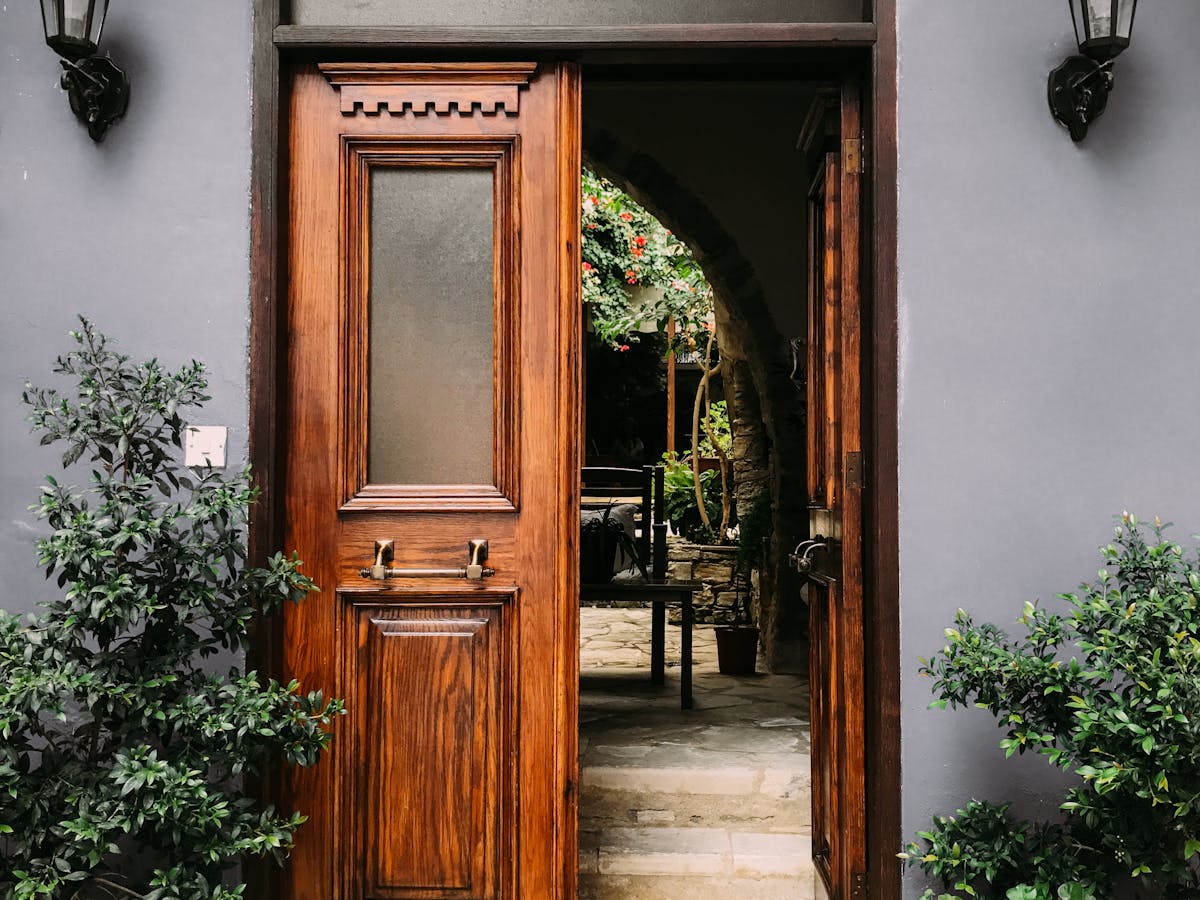When considering that the front door is often the first impression guests have of your home, it is crucial to craft it with care.
Imagine being able to create a welcoming entryway that not only enhances your curb appeal but also improves energy efficiency.
By following a few key steps and selecting the right materials, you can start on a journey to make a custom entry door that perfectly suits your style and needs.
Choosing the Right Materials
When making an entry door, the choice of materials is a critical decision that will impact the stability and durability of the final product. Opting for Honduran Mahogany for the stiles of the door can provide exceptional stability and durability.
For a panel door construction, alternating the grain direction of each ply is essential as it helps prevent bowing.
Utilizing rift and quartered cuts in the door frame can further enhance stability. Edge glueing the middle core of the door not only strengthens it but also improves material efficiency.
As you consider the materials, pay close attention to the edge profiles. Whether opting for integral sticking, applied rabbeted molding, or a square edge, each choice will impact both the aesthetics and functionality of the door.
Designing Your Door
Craft with meticulous attention to detail the design of your entry door, ensuring a harmonious blend of aesthetics and functionality.
When designing your exterior door, it’s important to think about its thickness, aiming for around 3-1/2 inches to provide insulation and stability.
Opt for high-quality materials like salvaged cherry lumber to guarantee durability and longevity.
To enhance energy efficiency and insulation, choose triple-pane low-e glass for your door.
Custom-built jambs and double-weatherstripping are essential to guarantee airtightness, preventing drafts and energy loss.
For heavy doors, make sure they fit within the door frame smoothly by designing inset doors with silicone flipper seals and brushed sweeps to provide top-notch weather protection.
Measuring and Cutting
To guarantee a precise fit for your entry door, meticulously measure the width, height, and thickness of the door opening before proceeding with cutting.
Consider the swing direction and handle placement to make sure your new entry door functions correctly.
Use a circular saw or table saw to make the necessary cuts on the door slab based on your accurate measurements.
When cutting, employ a guide or straight edge to guarantee straight and clean cuts, essential for a professional finish.
Double-check all measurements and cuts before installation to avoid any fitting issues later on.
Remember, the quality of your cuts directly impacts the overall appearance and functionality of your entry door.
Taking the time to measure carefully and make precise cuts is critical for a successful door-making project.
Assembling the Door Components
For the exterior side, skillfully assemble the door components by incorporating tongue-and-groove planks within a meticulously crafted glued-up frame.
Enhance the door’s strength by driving cleats made from quarter sawn white oak and XPS-foam thermal break into sliding dovetails. This method guarantees durability and stability, essential for an exterior door.
To fortify the door further, add an air barrier on the exterior side, boosting weather protection and insulation.
When constructing the interior panel, slide boards onto dovetails, ensuring the center board has tongues on both edges for a seamless fit. Maintain airtightness and insulation by filling any gaps with expanding polyurethane foam and sealing joints with polyurethane caulking.
By paying attention to these details, you secure a well-constructed door that excels in both function and form.
Finishing Touches and Installation
Enhance the door’s aesthetic appeal and functionality by meticulously applying the finishing touches and guaranteeing proper installation techniques are implemented.
When installing exterior doors, it’s important to use proper hinges and support to effectively manage the door’s weight.
Consider incorporating integral sticking, applied rabbeted molding, or square edge designs to elevate the door’s overall look and feel.
Educate clients on the craftsmanship and complexity involved in woodworking projects to help manage their expectations.
Seal the door panels with hot melted paraffin wax and make sure that all edges and bottoms are properly sealed before installation.
Utilize techniques like CEPS for sealing end grain, and for increased durability in wet conditions, opt for Mahogany.
Conclusion
To sum up, by carefully choosing high-quality materials, precise measurements, and meticulous assembly techniques, you can create a custom entry door that isn’t only visually appealing but also energy-efficient and durable.
Attention to detail in every step of the process will guarantee a well-crafted and functional door that enhances the aesthetic and performance of your home.
Craftsmanship and precision are key to achieving a professional result that will stand the test of time.


Leave a Reply